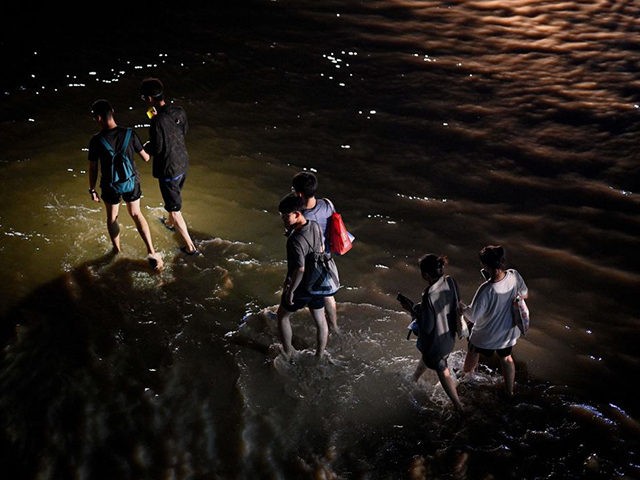Record floods in China’s central Henan province have killed at least 25 people as of Wednesday and forced a the evacuation of an additional 200,000 people in the provincial capital, Zhengzhou, local government officials said.
Zhengzhou recorded its highest daily rainfall on July 20 since weather records for the city began, “receiving the equivalent of eight months of rain in a single day,” according to the U.N. Storms in Henan began late last week and quickly escalated into record flooding. The torrential rainwater submerged much of central Zhengzhou by Tuesday, “cutting off electricity and water supplies” across the city, the South China Morning Post reported.
“The worst-affected area in the city of around 12.5 million was between Haitansi and Shakoulu stations on Line 5 of the subway, where at least 12 people died when their train was trapped by rapidly rising floodwaters,” according to the Hong Kong-based newspaper.
Video footage circulating on Chinese social media platforms such as Weibo on Tuesday showed passengers trapped inside flooded subway train cars in Zhengzhou as fast-rising water lapped at their chests.
“Rescuers cut open the roof of the coach to pull people to safety,” Agence France-Presse reported of at least one flooded subway train car in Zhengzhou on Tuesday, citing local media.
“Twelve people died and more than 500 were pulled to safety after a subway tunnel flooded,” Chinese state media reported.
“The rain halted bus services in the city,” a Zhengzhou resident surnamed Guo told Reuters on Wednesday. “That’s why many people took the subway, and the tragedy happened.”
China’s People’s Liberation Army (PLA) said Wednesday it had “averted the collapse of the stricken Yihetan dam,” which is located about 87 miles west of Zhengzhou. The PLA said it had carried out blasting operations at Yihetan dam and its troops had “successfully opened a new flood diversion opening.”
The PLA also deployed thousands of soldiers to other nearby rivers “to reinforce embankments with sandbags as the floods fanned out across Henan and warnings were issued for other near breaches of dams,” according to AFP.
“Some reservoirs had their dams burst … causing serious injury, loss of life and property damage,” Chinese leader Xi Jinping said in a statement published by the state-run broadcaster China Central Television (CCTV) on Tuesday.
“We have already entered the critical stage of flood control, leaders and [Chinese Communist Party] cadres from all walks of life must … take the lead in commanding, quickly organize forces for flood protection and disaster rescue,” Xi said.
“From Saturday [July 17] to Tuesday [July 20], 617.1 mm (24.3 inches) of rain fell in Zhengzhou, almost the equivalent of its annual average of 640.8 mm (25.2 inches),” Reuters reported on July 21. The city’s recorded rainfall over the three-day span “matched a level seen only once in a thousand years,” according to the Zhengzhou weather bureau.
Zhengzhou is located along China’s Yellow River. Flooding in southwest China’s Sichuan province this month significantly increased the water levels of 14 Chinese rivers connected to the province, including the Yellow River, which flows across north-central China. China’s Ministry of Water Resources warned on July 11 that the Yellow River was at a “critical period of flood control with parts of its basin likely to see total rainfall 20 percent to 50 percent higher than average.”
“The flood control system [in the Yellow River Basin] is not yet complete, the dams have weak links, preventing floods on small and medium-sized rivers is difficult, and [local Chinese Communist Party] cadres and the public lack actual flood-fighting experience,” the ministry said in a press release.
The Yellow River is China’s second-longest river after the Yangtze. Annual floods along the banks and basins of these rivers and their tributaries are normal during China’s rainy season. The threat from the annual floods has worsened in recent decades, however, “due in part to widespread construction of dams and levees that have cut connections between the river and adjacent lakes and disrupted floodplains that had helped absorb the summer surge,” AFP noted Wednesday.

COMMENTS
Please let us know if you're having issues with commenting.